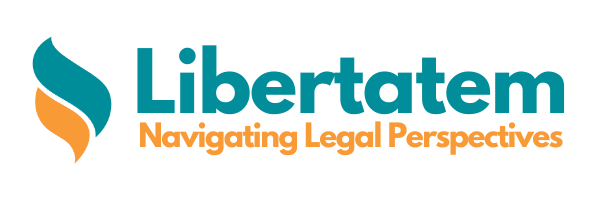The High Court rejected the bail of the accused involved in an unlawful claiming of an input tax credit. It stated the petitioner’s crime as ‘well planned pre-mediated loot of public exchequer’.
Facts of the case
In the case of Paresh Nathalal Chauhan v. State of Gujarat, the State Goods and Services Tax department scrutinized the scam in input tax credit. It issued an arrest warrant against Mr. Paresh Nathalal Chauhan in October 2019. The accused generated fake invoices worth Rs, 427.28 crores to evade taxes worth Rs. 60.73 crores. The enforcement wing invoked section 132 of the Central Goods and Services Tax Act, 2017. The Department arrested in December 2019 suspecting the involvement of other beneficiaries.
The Court has issued summons to as many as 406 firms, though, to no avail. The case is currently under thorough investigation with possible identification of the abettors. In April 2020, the accused applied for bail under section 439 of Code of Criminal Procedure, 1973.
Senior Counsel Nirupam Nanavati with Mr. Chetan Pandya represented the petitioner. Mr. Mitesh Amin, the public prosecutor, represented the State of Gujarat.
Conceptual understanding of the offence
There has been a rise in input tax credit scam during the GST regime in a mere two years. The offenders use various modus operandi to evade the taxes.
GST, a destination-based tax, levies tax at the point of consumption. The manufacturer adjusts final tax liability against the taxes paid while purchasing inputs. The invoices of initial purchase verify the transaction for claiming the credit.
The offenders generate a bogus bill of purchase by mushrooming non-identifiable entities. They generate fake invoices without any actual movement or transaction of goods. Moreover, the tax evaders claim cash refunds on the inverted duty structure. It is a GST permitted mechanism where the tax paid on input is more than the final tax liability.
Arguments of the Petitioner
The learned counsel for the Petitioner made the following contentions-
The counsel for the petitioner has contended on the medical grounds of the accused. The heart ailment and insertion of two stents in the heart calls for admission of the bail.
The offence is punishable for five years of imprisonment. Moreover, there is a recovery of Rs. 14 crores after recording the statements from over 35 beneficiaries. Thus, viewing the quantum of sentence and amount at once, the court may grant bail.
The in-progress investigation and complaint filing appear as a fraud on the statute. Sec. 167 Code of Criminal Procedure, provides bail in case of an incomplete investigation. The lack of arresting alleged connivers entitles the petitioner to a default bail. Hence, the purpose of a hasty complaint deprives the benefits to the petitioner.
Besides, the concerned authority did not issue any assessment notice to the petitioner. This proves no case against the petitioner. The counsel has referred to the case of Sanjay Chandra v. Central Bureau of Investigation (2012) 1 SCC 40.
Arguments of the Respondent
The learned counsel for the Respondent made the following contentions-
It submitted that the petitioner cannot avail for discretion. By pre-mediating 35 fictitious firms to claim the input tax credit. It was a loot on the public exchequer as turn over @350 crores was a fraudulent representation.
The present circumstances attract the provisions of Section 167, Code of Criminal Procedure. But, the consideration criteria is the size of the offence and partial recovery of the loot. The case requires more investigation to submit concrete evidence. The perpetuity in the transaction i. e. internal flow of money within the accused’s trade has been already unearthed.
The quantum of punishment cannot be a sole consideration for the bail. An economic crime of Rs. 60 crore, causing loss to the public exchequer serves for deterrence. Thus, individual liberty must give way to the public interest.
The recovery of incriminating material from petitioner’s possession proves the crime. It included laptop, rubber stamp and pre-signed cheque books of fictitious firms. Moreover, the case is not of avoidance of tax. Instead, it is of unlawful laundering racket to claim the input tax credit.
Court’s Observation
The court distinguished the facts of the present case and the cited case. The accused in the precedent case was on bail throughout the trial. There were no complaints of evidence tampering. There have been 406 summonses issued and 92 beneficiary firms in scrutiny. The bail does not prevent the investigating agency from investigating. But the bail will be a potential threat as the petitioner manipulated evidence in the past.
Also, it was the timely detection of fraud that the scam halted at Rs, 60 crores. The accused was able enough to continue the planned loot of public money. Thus, the court decided in light of the above contentions and observations.
Court’s Decision
Justice G. R. Udhwani, in this case, rejected the bail application. The reason being that ‘a pre-mature comment be not made on the findings of the investigation’. Identification of the person conniving will build the case.
Moreover, there is nothing to suggest ill- health of the petitioner. If required, the petitioner will receive necessary medical help.
Libertatem.in is now on Telegram. Follow us for regular legal updates and judgements from the court. Follow us on Google News, Instagram, LinkedIn, Facebook & Twitter. You can also subscribe for our Weekly Email Updates. You can also contribute stories like this and help us spread awareness for a better society. Submit Your Post Now.

